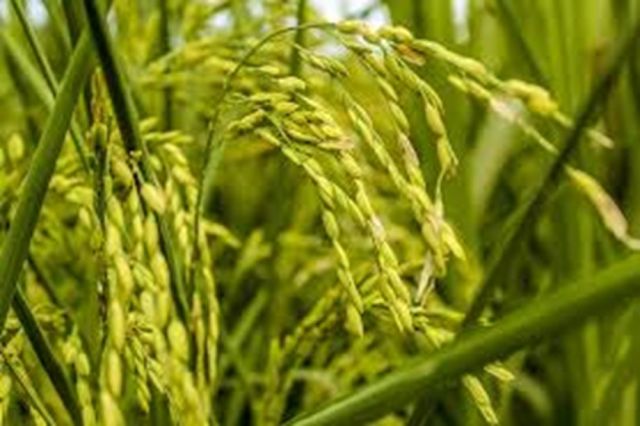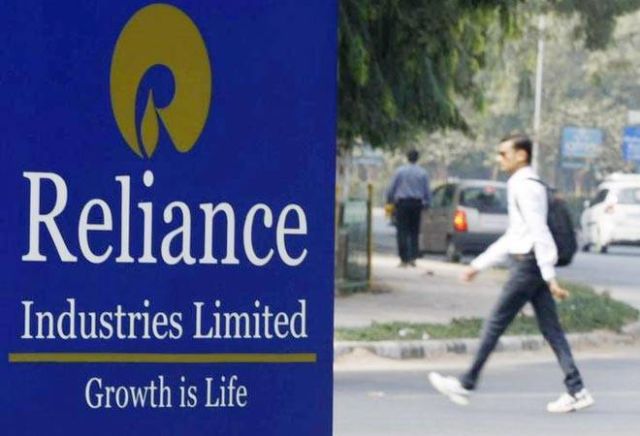
by admin | May 25, 2021 | Commodities, Commodities News, Commodity Market, Economy, Investing, Markets, News
 New Delhi : Malaysia-based Saba Industries Chairman and CEO Malini Saba on Wednesday said the privately-held company will invest $100 million in the rice sector in India and Thailand, as it plans to export the staple by partnering with local farmers.
New Delhi : Malaysia-based Saba Industries Chairman and CEO Malini Saba on Wednesday said the privately-held company will invest $100 million in the rice sector in India and Thailand, as it plans to export the staple by partnering with local farmers.
“We are looking at a $100 million investment between Thailand and India. And based on how much more money we need to pump in, we will do that in the next phase. We plan to start our first phase in Uttar Pradesh,” Saba told IANS during her visit to India.
The global exporter of agricultural commodities plans to enter warehousing and drying space in India’s rice sector. The Kuala Lumpur-based firm will set up about 10 warehouses in Uttar Pradesh and as many dryers with an aim to dry 1,000 tonnes rice per day.
“In the initial 2-3 years, we plan to focus on Uttar Pradesh, partnering with the farmers there. As we did in other south-east Asian countries, we plan to support the farmers in India with farm equipment and fertilisers for free and procure their rice and get it processed at local mills.
“To start with, we are looking at exporting 20,000 to 25,000 tonnes of rice, particularly Basmati, per month. We have a ready clientele in the US, Middle East and other parts of the world,” Saba said.
Farm equipment will help farmers plant and harvest paddy faster, she said.
The founder of the $650-million company also deals in mining of iron ore and gold.
“Transportation and warehousing are the major challenges in the agriculture sector in most countries like India. One of the things we discovered in India is that the drying capacity is quite limited despite the presence of a number of mills. We plan to get in large dryers with capacities ranging from 10,000 to 20,000 tonnes a month,” she said.
After Uttar Pradesh, the company will replicate the model in Andhra Pradesh and West Bengal and later to other states to scale up its operations in India.
—IANS

by admin | May 25, 2021 | Economy, Investing, News, Opinions
 By Taponeel Mukherjee,
By Taponeel Mukherjee,
Given the current economic scenario of India, it would be prudent to have our eyes on the pressing issues that need the attention of the government over the next six years. Policy changes, new policies and an environment that facilitates investment will be vital.
The recent renewable energy auctions, which failed to attract significant bids, bring to the fore the crucial question around price caps. While providing low-cost electricity is essential, so is a sustainable power sector. The issue that merits more debate is whether a free-pricing market with a regulator that ensures no cartels are formed is a better solution in the long run than price caps.
This argument applies not only to renewable energy, but all sectors. Investors in any sector face variable dynamics across a variety of factors ranging from input prices, credit costs, research and development costs and foreign exchange risk. “Pricing” of a product or a service needs to consider all that goes into making or producing the product.
To give an example, drug pricing for a patented drug involves significant research and development costs. Therefore, the price of a drug needs to factor in a fair amount of analysis to determine the price over and above raw materials.
Similarly, for other sectors, it is vital that the rapid pace of growth and expansion can continue so that risk-taking businesses can get rewarded adequately. Extreme measures to control prices can lead to sector problems, thereby discouraging investments and research. Therefore, over the next few years, it is essential to strike a balance between low-cost products and services, and sustainable industry dynamics.
In the financial markets, India needs to further embrace mark-to-market valuations in the corners of the market that still utilise hold-to-maturity accounting. Banks hold certain financial instruments as hold-to-maturity from a regulatory perspective. Besides these instruments, the quicker the rest of the fixed income product universe moves towards mark-to-market regulations the more robust a capital market India will have.
While increased mark-to-market regulations might lead to an initial slowdown in the bond markets, the long-term benefits of a transparent credit pricing market far outweigh any short-term costs. The most significant advantage of stringent mark-to-market regulations will be the ability of market prices to be a better indicator credit risk of products, thereby encouraging effective risk management by investors and financial institutions alike.
Divestment of government assets to create new infrastructure will be crucial. The recent decision to approve the divestment of the government’s stake in the Dredging Corporation of India and the in-principle approval of the PPP model for six airports is a step in the right direction. However, to deliver valuable infrastructure, the government must ensure that non-tax revenue is used to develop infrastructure in the specific sectors where the divestment occurs, or the PPP happens. Enabling infrastructure creation that is industry-specific regarding both the divestment or partnership and in creating new assets will add significant value.
The agriculture sector will require focus with renewed vigour over and above minimum support prices and farm loan waivers. The sector is vital not just to improve the lot of farmers (who are at the riskiest end of the farm-to-fork model) but also to create avenues to feed a sizeable consuming population. The farm-to-fork model is much spoken about and needs a step-wise approach to succeed in the long-run.
A good start would be to choose sub-sectors within agriculture that are amenable to a farm-to-fork model so as to create a “model template”. A farm-to-fork model would involve procuring the original product, processing, storage and transportation, and merchandising the product. Choosing the low-hanging fruit to create templates will help expedite the process. More importantly, user-cases will help spot the gaps within the agricultural supply chain.
Government policies that create an effective pricing environment and avenues for revenue generation to enable investment and infrastructure will be crucial going forward. More importantly, long-term sustainable growth will require a balanced approach to help promote a broad spectrum of sectors such as energy, finance and agriculture.
(Taponeel Mukherjee heads Development Tracks, an infrastructure advisory firm. The views expressed are personal. He can be contacted at taponeel.mukherjee@development-tracks.com or @Taponeel on Twitter)
—IANS

by admin | May 25, 2021 | Business, Commodity Market, Investing, Medium Enterprise
 Bhubaneswar : Hindalco Industries, the metals flagship of the Aditya Birla Group, plans to invest about Rs 6,000 crore to set up downstream facilities over the next four years, a top company official said here on Tuesday.
Bhubaneswar : Hindalco Industries, the metals flagship of the Aditya Birla Group, plans to invest about Rs 6,000 crore to set up downstream facilities over the next four years, a top company official said here on Tuesday.
“We are going to put up a downstream facility between Hirakud and Lapanga (in Odisha), which will entail about Rs 5,000 crore of investment and we are probably going for about 300 kt (kilo tonnes) of downstream products,” company’s Managing Director Satish Pai told reporters here.
He said the investments will also be made at Mundra in Gujarat for its upcoming extrusion plant.
“We will be investing Rs 6,000 crore in the downstream sector in the next four years,” he said on the sidelines of the ‘Make in Odisha’ conclave.
The expansion and setting up of units for downstream products takes time and will be done in a phased manner.
He said the aluminium major would make a capital expenditure of Rs 1,600 crore this fiscal year ending March, of which Rs 700-800 crore will go towards maintenance of its facilities.
The remainder will be spent on brownfield expansion of Utkal Alumina and downstrem expansion.
Pai said the company would also look at coal mine auctions that are scheduled at November-end, as coal availability remains a concern.
“There is no quick-fix for coal shortages. We are not importing (coal) yet. We have started putting some volumes, about 0.5 million tonnes, for import at this stage. The company is waiting for coal mine auctions that are going to happen by the end of November,” he said, adding that the company operates three coal mines – two in Chhattisgarh and one in Jharkhand.
“We can ramp up our coal production to meet our energy needs. The Dumri mine would be available by the middle of next year,” he said.
Pai said that the acquisition of US-based aluminium sheet-maker Aleris Corp is expected to be completed by April-May next year.
—IANS

by admin | May 25, 2021 | Business, Economy, Investing, Markets, News, SMEs
 Bhubaneswar : Reliance Industries Chairman and Managing Director Mukesh Ambani said on Monday the group, which has already invested Rs 6,000 crore in Odisha over the last few years, will invest an additional Rs 3,000 crore in the state.
Bhubaneswar : Reliance Industries Chairman and Managing Director Mukesh Ambani said on Monday the group, which has already invested Rs 6,000 crore in Odisha over the last few years, will invest an additional Rs 3,000 crore in the state.
“Today, Reliance has emerged as one of the largest investors in the state in the last few years. Reliance has already invested over Rs 6,000 crore in the state. And today, I am committing to invest an additional Rs 3,000 crore in our new businesses in Odisha,” he said at the Make in Odisha Conclave here.
The additional investments would be made in the next three years.
“Most of our investments are in creating the Jio network. For Reliance, Jio is not just another business. It is a mission to transform India — to transform Odisha. We have created sustained new employment opportunities, both direct and indirect, to over 30,000 people in the state,” he said.
Since Reliance Jio commenced operations little over two years ago, India has moved from the 155th rank in mobile broadband penetration to being the number one nation in mobile data consumption in the world, he said.
“We are committed to connecting everyone and everything, everywhere always with the highest quality and the most affordable price. I have a big reason for focusing on digital business.
The world is at the cusp of a digital revolution,” Ambani said.
He also said the group is taking another step to propel Odisha further into the digital future.
“With JioGigaFiber, we have now begun an ambitious push in fixed broadband through fiber-to-the-home and premise.
“Our aim and resolve is to ensure that India rises from the present 135th rank to be amongst the top three nations in fixed broadband within the next three years,” Ambani said.
—IANS

by admin | May 25, 2021 | Branding, Business, Entrepreneurship, Investing, Markets, Medium Enterprise, Startup Basics, Technology
 Seoul : Aiming to bring deep learning (DL) technology to autonomous cars, Hyundai Center for Robotic-Augmented Design in Living Experience (CRADLE) on Tuesday announced a strategic investment in Israel-based start-up allegro.ai that specialises in DL-based computer vision.
Seoul : Aiming to bring deep learning (DL) technology to autonomous cars, Hyundai Center for Robotic-Augmented Design in Living Experience (CRADLE) on Tuesday announced a strategic investment in Israel-based start-up allegro.ai that specialises in DL-based computer vision.
“Deep learning computer vision is one of the core technologies that can be applied to autonomous driving to navigate roads and make quick decisions in real-time and allegro.ai is clearly an innovation leader in that field,” Ruby Chen, Head of Investment at Hyundai CRADLE Tel Aviv, said in a statement.
The start-up’s platform simplifies the process of developing and managing deep learning-powered solutions such as autonomous vehicles, drones, security, and logistics among others.
“Our investment in allegro.ai is a further step in enhancing our presence in the Israeli market, a global leader of technological innovation in the fields of automation, AI and DL,” he added.
The partnership is expected to speed up deployment of AI technology in the car-making major’s many business areas.
“We are proud to partner with Hyundai and share Hyundai’s belief that AI empowers the industry to provide greater road safety, autonomy, to better understand customers’ needs and to help broaden their experiences,” said Nir Bar-lev, CEO and Co-founder of allegro.ai.
Founded in 2016, allegro.ai offers the first end-to-end DL lifecycle management solution focused on DL as it applies to computer vision.
—IANS

 New Delhi : Malaysia-based Saba Industries Chairman and CEO Malini Saba on Wednesday said the privately-held company will invest $100 million in the rice sector in India and Thailand, as it plans to export the staple by partnering with local farmers.
New Delhi : Malaysia-based Saba Industries Chairman and CEO Malini Saba on Wednesday said the privately-held company will invest $100 million in the rice sector in India and Thailand, as it plans to export the staple by partnering with local farmers.



